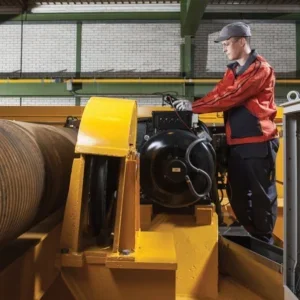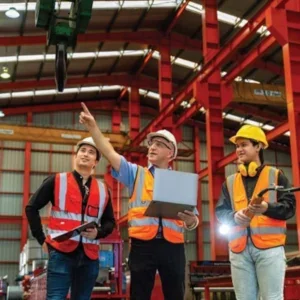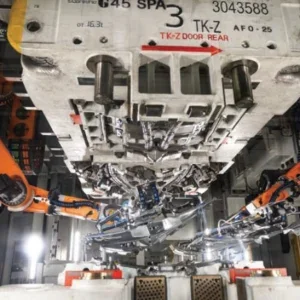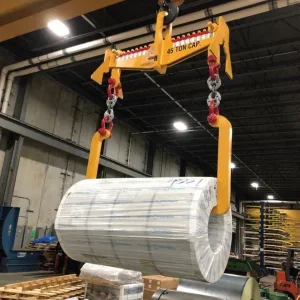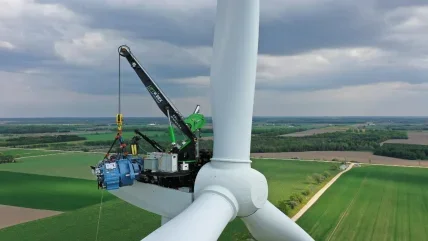
Last year, more than a quarter of the UK’s energy came from wind power, and it was about equally divided between onshore and offshore turbines. Offshore growth and opportunities, however, are considerably greater than onshore.
Globally, the picture was similar. Installed offshore capacity grew by some 15%, to around 60GW. And we are only at the start of the story: the seaboards of the US are virtually untapped as a wind resource, though that is changing. Elsewhere, suitable shallow-water coastal sites are already being largely exploited and attention is moving further offshore, where winds are stronger and more constant but waters are deeper. This is accelerating the development of floating turbines rather than towers set into the seabed, and their potential could dwarf that of seabed towers. Eighteen countries now have offshore wind farms – Italy joined the ranks last year – and 32 more have them under development or at the planning stage. Offshore wind construction is a boom industry.
But towers, floating or static, are tall. The rotor diameter of a Siemens Gamesa generating turbine is 154m; vessels to lift them into place and to set the blades onto the nacelles need lifting apparatus to reach of 200m or more.
All this needs not just specialised construction vessels but specialised support vessels also. The former are not just specialised but very specialised indeed, not least in their incorporated lifting apparatus; the latter also need winches specific to their purpose, and constructing these vessels is also a boom industry. There are estimated to be around 1,300 such vessels worldwide, with around 200 more under construction. Makers of winches, hoists and other maritime or subsea lifting gear have a challenge to rise to.
Let us start with static towers and the vessels that set them in place. Jack-up barges, with legs on which they can raise themselves out of the water, are a staple here, and designing the mechanism that raises them is demanding. They need, among other things, large pinions, large gearboxes and large amounts of power, all combined with sophisticated control systems to keep the barge level and stable, with precise positioning ability thrown in.
In November, offshore lifting specialists Huisman reached an important milestone in the development of a new jacking system tailored specifically for wind turbine installation jack-up vessels. It has teamed up with its long-term supplier of gearboxes for offshore equipment, German-based O&K Antriebstechnik, part of the Bonfiglioli Group, and together they successfully completed a factory acceptance test (FAT) for the first Huisman Jacking Gearbox, which will be part of the system.
The jacking system contains a dedicated proprietary control system that optimises the system’s load distribution, specifically for turbine and foundation installation. Control is by Huisman’s well-known proprietary Variable Frequency Drive Control System. Two gear versions will be available – L and XL – suitable for vessels from various independent design companies and of various sizes: static pinion loads up to 800t in the Large version, or 1,000t in the Extra Large. There is potential to achieve leg preload capacities beyond 30,000t, depending on leg layout and the system’s number of layers.
The FAT consists of multiple tests under motion at O&K’s test facility in Hattingen, in North-Rhine-Westphalia. Upon delivery of the gearboxes to one of its production facilities, Huisman will continue with fullload jacking demonstration trials.
The aim of all this effort is, of course, to reduce the carbon footprint of mankind’s energy demands. It is therefore entirely appropriate that in the same month, November 2022, Huisman announced its intention to launch a sustainable impact assessment to determine the carbon footprint of its products, from design up to and including delivery. The data will be used to provide insight into how the company can further reduce the CO2 footprint of its products. The calculation method is independently verified and performed according to internationally recognised ISO standards. Huisman aims to include the sustainable impact assessment in all quotations as of 2023. Huisman’s next step is to gain insight into the emissions produced by a product during the operational phase in order to add further value to future calculations.
Factors helping to reduce carbon impact include electrification, lightweight design, electric drive system and long operational lifetime, factors that contribute to both a lower environmental footprint and cost-effectiveness for the owner. Huisman has been a frontrunner in the electrification of heavy lift cranes to optimise energy efficiency. The first of its kind, built in 1984, is still performing today aboard BigLift Shipping’s heavy lift vessel Happy Buccaneer.
These are the heavy-lift end of the business. Support ships also need small-capacity hoists above and below deck, and plenty of them, and space and headroom are always at a premium on such vessels. Maritime hoist specialists Tiger Lifting, based in Northumberland, UK, celebrated its tenth anniversary last year; more pertinently, it also introduced its low-headroom and ultra-low headroom combination chain block and trolley. Capacities range from 1.0t to 10t, or to 12t in the ultra-low version. The depth of the trolley block can be as little as 240mm, chain can be supplied to any height of lift, and corrosion and sparkresistant versions are available. The hoists are suitable for land-based as well as for maritime operation.
PALFINGER
At the WindEnergy show in Hamburg, Germany, in September 2022, and in response to the latest safety requirements of the global offshore wind industry, Palfinger launched a redesign of its well-proven fixed-boom crane range. The PF120-4 is for installation on the transition platforms of the towers themselves, for lifting operations during regular maintenance of offshore wind turbines.
The redesigned crane can lift materials and tools from the crew transfer vessel (CTV) onto the transition piece (TP) platform of the wind turbines and is intended for use during routine inspection and service work throughout the turbines’ entire operational life.
The new range has been designed in accordance with the latest technical requirements of the European standard EN13852-3 for light offshore cranes and plays an important role in lifting spare parts and equipment in the daily offshore wind industry supply chain.
“Because access to offshore wind farms is limited and every working hour must be efficiently used, we’ve made the new PF cranes highly resistant to the harsh environmental conditions,” says Franz Schnöll, head of global marine product management.
“Furthermore, we have reduced the maintenance effort, to lower the life cycle costs for the wind park owner. The new crane design comes from more than 15 years of installed base experience and feedback from service teams and our clients. It is therefore well positioned for the future requirements of the global offshore wind industry.”
The design is modular, and standardised reaches are from 3m to 7m. Safe working loads are 1,000kg at 3m to 7m in singleline operation and up to 3,000kg at 2.9m to 6.9m outreach in double-line operation. Each crane undergoes thorough function and load tests at the assembly plant before being delivered. The procedure is said to ensure ‘plug and play delivery’ with the highest safety standard and minimised installation time.
So far, more than 250 of the new Palfinger fixed boom cranes have been ordered and are scheduled to be delivered to the UK, Taiwan, US and Japan between Q4 2022 and Q2 2024. They will be installed on jacket and monopile bottom fixed structures as well as on substations.
One such order is for 60 units for the Moray West Offshore Wind Farm in the outer Moray Firth off Inverness in Scotland, UK. Palfinger is also delivering a PTM1200 jetty crane to the farm’s operations and maintenance base at Buckie Harbour. The large-scale project is being developed by Ocean Winds, a 50-50 joint venture formed by EDP Renewables and Engie. Each of the 60 wind turbines has a generating capacity of 14.7MW. Once operational, the Scottish wind farm is expected to meet the power requirements of about 650,000 households in Scotland for the next 25 years.
Thern davits remove pollution
Danish company Desmi make pumps and environmental clean-up systems for oil spills and other pollution. Its oil-skimmers are used to recover oil in ports, rivers, lakes and from the sea. After use, the skimmers are heavy, smeared in oil and difficult to handle due to the constant movement of the sea. Safe handling during deployment and recovery requires reliable and heavy-duty lifting solutions that withstand the harsh environment at sea.
The Commander series stationary davit crane from US hoist maker Thern gave the combination of portability and power to get the job done. A grey epoxy finish provides a corrosion-resistant layer to protect from harsh environments. Desmi found that the Thern davit cranes were able to lift and lower the oil skimmers with ease, leaving their operatives to fully focus on the task at hand of cleaning up oil spills to keep a clear waterway.
Liebherr maintains from onshore
The DolWin5 project in the North Sea is to deliver 900MW from three wind parks to the Netherlands and northern Europe.
As in other offshore farms, the wind turbines generate three-phase alternating current (AC). To transmit it to shore, it is converted to direct current (DC) and sent through an undersea cable, some 100km long, past the island of Borkum to a landing point in East Frisia. Using DC rather than AC greatly reduces the power losses en route. The conversion from AC to DC will be performed at an offshore platform known as DolWin Epsilon, under construction in Singapore. A Liebherr crane recently travelled there for installation on the platform, which was planned for March. The DolWin5 platform is scheduled to enter service in 2024.
Liebherr’s RL 2600-35 Litronic is a weight-optimised and compact-designed offshore cylinder-luffing crane. It is intended for small platforms where space is limited. The crane has a box boom with a maximum working radius of 52m and a maximum lifting capacity of up to 35t.
The RL 2600 is equipped with a Master V control system, which was developed for the latest maintenance systems such as LiMain. LiMain, which stands for Liebherr Intelligent Maintenance, is Liebherr’s automatic and remotely controlled maintenance system for cranes offshore on manned and unmanned platforms.
Platform owners spend a lot of resources in simply getting maintenance workers safely onto platforms, by helicopter or boat, and off them again when the generally routine maintenance has been completed. The LiMain system lets the maintenance operator remain safely onshore, monitoring and if necessary controlling the crane, while the system does the work.
Manual tasks are automated, even in hard-to-reach locations such as the jib head, so greasing and lubrication for boom pivot bearings, rope sheaves and the like are taken care of. Sensors perform continuous condition monitoring and send the data back to shore. LiMain can perform predictive maintenance and give service life forecasts for crane components. Environmental factors such as wind speeds are monitored as well.
LiMain can result in 12 months or more of crane operation and maintenance, offshore on an unmanned platform, without the need for a person to be physically present. The possible savings are more than considerable: Liebherr says that LiMain offers up to 75% less mobilisation on unmanned platforms and up to 50 fewer service days on manned platforms per year.
In autumn 2022, the system was presented to representatives of the offshore wind industry in a live show in which an offshore crane, of the same RL 2600 type, located in Rostock, Germany, was fully controlled from Nenzing in Austria.
“We expect more projects to be launched in the offshore wind sector,” says Matti Basan, senior sales manager for Liebherr Offshore Cranes. “Our goal is to continue to play a leading role in the development and supply of crane solutions for the offshore industry.”
Lankhorst First for Deepwater Splicing
Floating wind farms need to be anchored, and generally in deep water. Long ropes are required, generally of synthetic fibres. Splicing such ropes is not simple.
Until now there has been no DNV-qualified splicing method for deepwater deployment and recovery systems, but in an industry first for deepwater rope systems, ropemakers Lankhorst Offshore announced in February the development of a DNV Endorsement of Qualification Plan End-to-End rope splice for its LankoDeep rope. In the event the LankoDeep needs to be spliced offshore, an end-to-end splice can be made quickly, allowing offshore operations to continue uninterrupted, without the need for shore-based interventions.
The splicing procedure was developed in-house – it is being certified under
DNV Technology qualification management and verification DNV-SE-0160 and is said to significantly improve the viability of deepwater deployment and recovery projects.
LankoDeep is based on Dyneema DM20 XBO fibre optimised for cyclic bending. Designed from the outset for deepwater lowering and recovery projects, LankoDeep is said to offer significant operational and environmental benefits over steel wire ropes. Ropes are claimed to be easier to handle and allow engineers to lift and deploy the maximum load without the need to factor in the self-weight of steel wire.
“Neutrally buoyant LankoDeep allows operators to maximise the lifting capacity of their crane during deepwater deployment and recovery. With the introduction of the new DNV Certified End-to-End splice we’re considerably increasing the utility of LankoDeep, ensuring operations run smoothly,” says Sergio Leite, sales director, Lankhorst Offshore.


